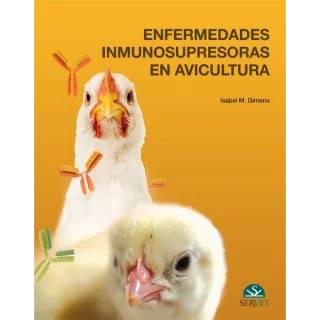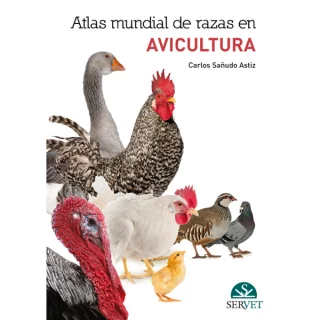Envíos a todo el mundo → Envío gratuito en compras superiores a 19€ (Península y Baleares)
This atlas describes the avian necropsy technique in a detailed and systematic manner. It also provides information about the pathologies commonly observed in poultry at the slaughterhouse, as well as guidelines on how to collect samples for diagnostic tests. This updated edition includes, in addition to more than 200 images, explanatory videos to obtain the maximum diagnostic yield.
1. Necropsy technique in poultry
Previous aspects to keep in mind
Objectives of the necropsy
Selection of animals for necropsy
Methods of euthanasia
Necropsy equipment
Characteristics and stages of the necropsy technique
External examination and sampling of the bird in vivo
Preparation of the cadaver and opening the coelomic cavity
Extraction of the internal organs
Study and evaluation of the internal organs
Study of the head: evaluation of the nasal cavity and brain
Study of the musculoskeletal system: evaluation of the nerves, joints, bones and muscles
2. Macroscopic evaluation of the organs
Previous aspects to keep in mind
Skin and subcutaneous tissue
Respiratory system
Conjunctiva
Nasal turbinates
Infraorbital sinuses
Trachea
Lungs
Air sacs
Digestive system
Oral cavity
Oesophagus and crop
Proventriculus
Gizzard
Intestine
Pancreas
Liver
Cardiovascular system
Lymphohematopoietic system
Thymus
Spleen
Bursa of Fabricius
Genitourinary system
Urinary system
Reproductive system
Musculoskeletal system
Bones
Muscles
Joints and tendons
Nervous system
Central nervous system
Peripheral nervous system
3. Sampling and other general considerations
Practical aspects to keep in mind
Submitting samples to the laboratory
Histopathology
Type of sample
Tissues or organs for sampling
Sample preservation
Microbiology/bacteriology
Type of sample
Tissues or organs for sampling
Sample preservation
Pathologies for which a microbiological study is indicated
Virology
Type of sample
Tissues or organs for sampling
Sample preservation
Molecular biology
Type of sample
Tissues or organs for sampling
Sample preservation
Serology
Type of sample
Sample preservation
Sample size
Time of sampling
Interpretation of results
Parasitology
Type of sample
Sample preservation
Toxicology
Type of sample
Sample preservation
- Autor/es Dr. H.L. Shivaprasad, Natàlia Majó Masferrer, Roser Dolz Pascual
- Fecha de edición marzo 2019
- Nº Páginas 100
- Encuadernación Tapa dura
- Tamaño 22 X 28
- Idioma Inglés












